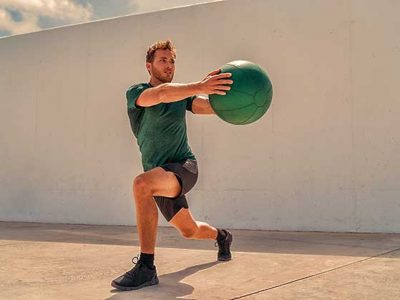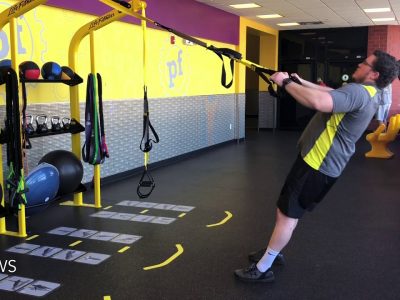Ever wondered why treadmills have an incline function and how to use it effectively?
This blog post will guide you through the ins and outs of treadmill incline, from understanding its benefits to leveraging it for maximum results.
Bạn đang xem: What Is Incline On Treadmill Updated 07/2024
Ready to take your workout game to new heights?.
Understanding Incline on Treadmills
Definition of incline on treadmills
In the world of fitness, incline on a treadmill refers to the angle or gradient at which you’re walking or running.
It’s much like tackling a hill outdoors, mimicking the resistance and muscle engagement needed for such terrain.
Depending upon your treadmill model, the incline percentage can range from 3% up to 12%, providing a challenging variety of workouts tailored to individual fitness levels and goals.
By manipulating this gradient feature on your treadmill – you effectively target different muscles in your lower body including calves, quadriceps, and glutes while also boosting your calorie burn significantly compared with flat-ground training.
Not only does it add an extra layer of intensity to your workout routine but it also aids increased cardiovascular system challenge due to raised heart rate caused by higher oxygen use in muscle tissues.
That’s why professionals often refer to inclined running or walking as one step beyond traditional flat-terrain treadmill exercises – they help push you out of your comfort zone while ensuring maximum health benefits in each stride!
Importance of incline in treadmill workouts
Incline is a game-changer when it comes to treadmill workouts. It’s not just about ramping up the difficulty level, but rather about taking your fitness routine to new heights.
When you increase the incline on a treadmill, you engage different muscles in your lower body, such as calves, quadriceps, and glutes.
This helps strengthen these muscle groups and improve muscular endurance over time. Plus, walking or running on an incline challenges your cardiovascular system even more than exercising on a flat surface.
Xem thêm : Why Is It Called A Medicine Ball Updated 07/2024
It raises your heart rate and increases oxygen use in your muscles, making each workout more effective at torching calories and burning fat.
So don’t shy away from stepping out of your comfort zone – embrace the challenge of an incline workout for maximum results!
Benefits of Using Incline on a Treadmill
Increased calorie burning and weight loss
Using incline on a treadmill is an effective way to increase calorie burning and promote weight loss.
When you raise the incline, your body has to work harder against gravity, which results in higher energy expenditure.
This means that you burn more calories during your workout compared to walking or running on a flat surface.
In fact, studies have shown that cranking up the incline on a treadmill can help you burn up to 60% more calories than walking on level ground.
So if you’re looking to shed those extra pounds, incorporating incline into your treadmill workouts is definitely worth considering.
Not only will it help boost your calorie burn, but it also adds variety and intensity to your routine for better results.
Reduced injury risk
Using incline on a treadmill can significantly reduce the risk of injuries during your workout.
Walking or running on an inclined surface helps to distribute the impact forces more evenly throughout your body, reducing the strain on your joints and muscles.
This is especially beneficial for individuals with knee or ankle issues as it puts less stress on these areas compared to exercising on a flat treadmill surface.
By incorporating incline into your workout routine, you can enjoy a low-impact exercise that still provides excellent cardiovascular benefits while minimizing the chances of sustaining injuries.
Xem thêm : How Long Do Treadmills Last Updated 07/2024
So lace up those sneakers and start stepping up that incline to protect your body and achieve optimal fitness results.
Strengthening lower body muscles
Using incline on a treadmill is an excellent way to strengthen your lower body muscles. When you walk or run uphill, the incline forces your calves, quadriceps, and glutes to work harder than they do on flat ground.
This increased effort helps build muscular endurance and tone these important muscle groups.
Plus, the incline engages different muscles compared to walking or running on a level surface, providing you with a well-rounded workout.
So, if you’re looking to target and strengthen your lower body, incorporating incline into your treadmill sessions is definitely worth it.
How to Utilize Incline on a Treadmill
Setting the right incline level
- Determine your fitness level and goals: Consider your current fitness level and what you hope to achieve with your treadmill workouts. Are you looking to increase endurance, build strength, or burn calories? Knowing this will help you choose the appropriate incline level for your workouts.
- Start with a slight incline: If you’re new to using incline on a treadmill, it’s best to start with a small incline of around 1-2%. This will allow your body to gradually adjust and prevent excessive strain on your muscles and joints.
- Increase gradually: As you become more comfortable and stronger, you can gradually increase the incline level. Aim to increase by 1% every few weeks or as your fitness improves. This gradual progression will help prevent injuries and allow your body to adapt effectively.
- Listen to your body: Pay attention to how your body feels while walking or running on an incline. If you start feeling fatigued or experience discomfort in any specific muscle group, it may be a sign that the incline level is too high for you at the moment. Adjust accordingly by lowering the incline or taking breaks as needed.
- Vary the incline: To keep challenging yourself and prevent plateaus in your progress, vary the incline levels during each workout. For example, you can start with a moderate incline for a warm-up, then increase it for higher intensity intervals, and finally decrease it for a recovery period.
- Be mindful of proper form: When walking or running on an incline, maintain good posture and engage your core muscles. Avoid leaning too far forward or backward, as this can strain your back and reduce the effectiveness of the workout. Also, ensure that you’re landing midfoot rather than heel-striking to minimize impact on your joints.
Incorporating interval training with incline
Interval training is a highly effective way to boost your treadmill workouts and maximize calorie burn.
By combining short bursts of high-intensity effort with recovery periods, interval training helps to elevate your heart rate and improve cardiovascular fitness.
When you incorporate incline into your interval training routine, you can further enhance the benefits and challenge your muscles in new ways.
- Start with a warm-up: Begin your workout by walking or jogging at a comfortable pace on a flat surface for about 5 minutes. This will prepare your body for the more intense intervals ahead.
- Increase incline: Gradually increase the incline of the treadmill to a challenging level that suits your fitness level. Aim for an incline between 3% to 8% initially, and adjust as necessary.
- High-intensity intervals: Once you have set the incline, pick up the pace and sprint or run at a high intensity for 30 seconds to 1 minute. Push yourself to reach around 80-90% of your maximum effort during these intervals.
- Recovery periods: After each high-intensity interval, reduce the speed back down to a comfortable walking or jogging pace. Allow yourself enough time to recover before starting the next interval.
- Repeat: Continue alternating between high-intensity intervals and recovery periods for around 10-20 minutes, depending on your fitness level and goals.
- Cool down: End your workout with a cool-down period of walking or slow jogging on a flat surface for about 5 minutes. This will help lower your heart rate gradually and prevent muscle soreness.
Proper form and technique
Here are some tips to keep in mind:
- Maintain proper posture: Stand tall with your shoulders back and core engaged. Avoid slouching or leaning on the handrails for support.
- Use your arms: Swing your arms naturally as you walk or run on an incline. This helps to engage your upper body and increase calorie burn.
- Take shorter strides: When walking uphill, take shorter steps to maintain stability and prevent strain on your knees.
- Land softly: Whether walking or running, aim to land softly with each step to reduce impact on your joints. Focus on landing mid-foot rather than heel-first.
- Keep your gaze forward: Avoid looking down at your feet while walking or running uphill. Instead, look straight ahead to maintain balance and proper alignment.
- Adjust the speed appropriately: Find a comfortable pace that allows you to maintain proper form throughout the workout.
- Listen to your body: If you feel any pain or discomfort, adjust the incline level or slow down as needed. It’s important to listen to your body’s signals and not push yourself too hard.
Conclusion
In conclusion, the incline on a treadmill is a game-changer for your workouts. By increasing the gradient, you can burn more calories, strengthen your lower body muscles, and reduce your risk of injury.
Don’t be afraid to step out of your comfort zone and incorporate incline training into your routine – the benefits are worth it!
So next time you hop on that treadmill, crank up the incline and challenge yourself to reach new heights in your fitness journey.
Nguồn: https://usgyms.net
Danh mục: Gym Equipment










